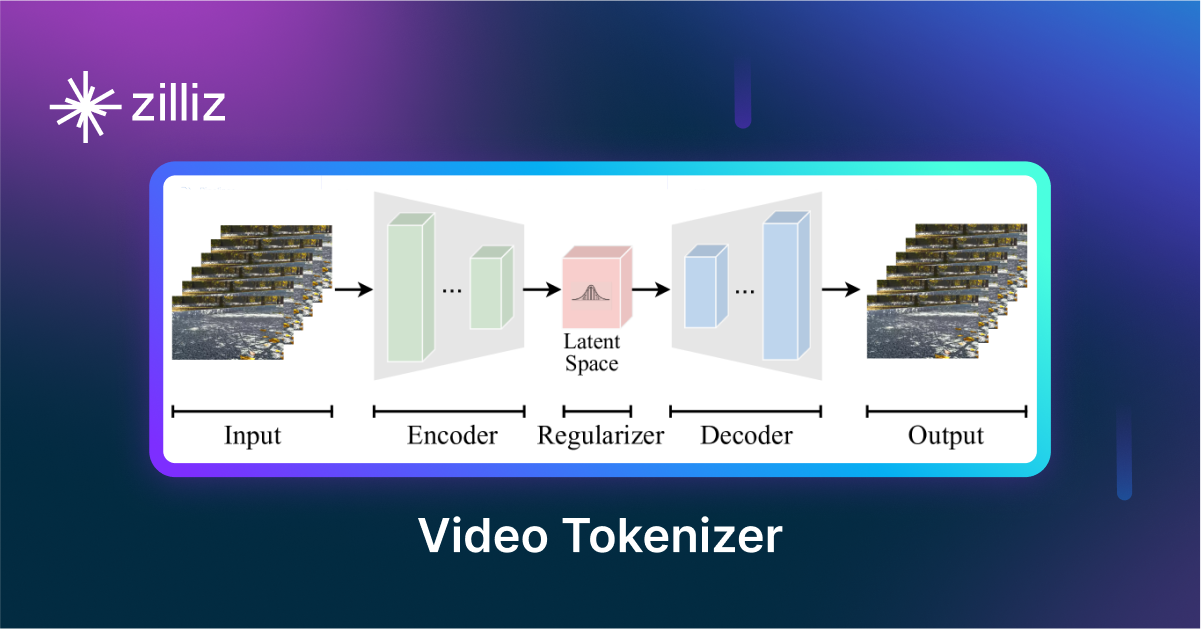Redis vs Deep Lake: Choosing the Right Vector Database for Your Needs

As AI and data-driven technologies advance, selecting an appropriate vector database for your application is becoming increasingly important. Redis and Deep Lake are two options in this space. This article compares these technologies to help you make an informed decision for your project.
What is a Vector Database?
Before we compare Redis and Deep Lake, let's first explore the concept of vector databases.
A vector database is specifically designed to store and query high-dimensional vectors, which are numerical representations of unstructured data. These vectors encode complex information, such as the semantic meaning of text, the visual features of images, or product attributes. By enabling efficient similarity searches, vector databases play a pivotal role in AI applications, allowing for more advanced data analysis and retrieval.
Common use cases for vector databases include e-commerce product recommendations, content discovery platforms, anomaly detection in cybersecurity, medical image analysis, and natural language processing (NLP) tasks. They also play a crucial role in Retrieval Augmented Generation (RAG), a technique that enhances the performance of large language models (LLMs) by providing external knowledge to reduce issues like AI hallucinations.
There are many types of vector databases available in the market, including:
- Purpose-built vector databases such as Milvus, Zilliz Cloud (fully managed Milvus), and Weaviate
- Vector search libraries such as Faiss and Annoy.
- Lightweight vector databases such as Chroma and Milvus Lite.
- Traditional databases with vector search add-ons capable of performing small-scale vector searches.
Redis is an in-memory database with vector search as an add-on and Deep Lake is a data lake optimized for vector embeddings. This post compares their vector search capabilities.
Redis: Overview and Core Technology
Redis was originally known for its in-memory data storage and has added vector search capabilities through the Redis Vector Library which is now part of Redis Stack. This allows Redis to do vector similarity search while keeping its speed and performance.
The vector search in Redis is built on top of its existing infrastructure, using in-memory processing for fast query execution. Redis uses FLAT and HNSW (Hierarchical Navigable Small World) algorithms for approximate nearest neighbor search which allows for fast and accurate search in high dimensional vector spaces.
One of the main strengths of Redis vector search is that it can combine vector similarity search with traditional filtering on other attributes. This hybrid search allows developers to create complex queries that consider both semantic similarity and specific metadata criteria, so it’s versatile for many AI driven applications.
The Redis Vector Library provides a simple interface for developers to work with vector data in Redis. It has features like flexible schema design, custom vector queries and extensions for LLM related tasks like semantic caching and session management. This makes it easier for AI/ML engineers and data scientists to integrate Redis into their AI workflow, especially for real-time data processing and retrieval.
What is Deep Lake? An Overview
Deep Lake is a specialized database system designed to handle the storage, management, and querying of vector and multimedia data, such as images, audio, video, and other unstructured data types, which are increasingly used in AI and machine learning applications. Deep Lake can be used as a data lake and a vector store:
Deep Lake as a Data Lake: Deep Lake enables efficient storage and organization of unstructured data, such as images, audio, videos, text, medical imaging formats like NIfTI, and metadata, in a version-controlled format designed to enhance deep learning performance. It allows users to quickly query and visualize their datasets, facilitating the creation of high-quality training sets.
Deep Lake as a Vector Store: Deep Lake provides a robust solution for storing and searching vector embeddings and their associated metadata, including text, JSON, images, audio, and video files. You can store data locally, in your preferred cloud environment, or on Deep Lake's managed storage. Deep Lake also offers seamless integration with tools like LangChain and LlamaIndex, allowing developers to easily build Retrieval Augmented Generation (RAG) applications.
Key Differences: Redis vs Deep Lake for Vector Search
When choosing a vector search tool you need to know how Redis and Deep Lake compare on key features. This will help you decide which one is best for your project.
Search Methodology
Redis uses FLAT and HNSW (Hierarchical Navigable Small World) for approximate nearest neighbor search. These algorithms are fast and accurate in high dimensional vector spaces. Redis combines vector similarity search with filtering, so you can do complex queries that consider both semantic similarity and specific metadata.
Deep Lake is designed for vector and multimedia data. It can store and query various data types, images, audio, video, text. Deep Lake’s search is optimized for these different data formats so it’s great for AI and machine learning applications that work with unstructured data.
Data
Redis with the Vector Library is great for structured and semi-structured data. It’s strong when you need to combine vector search with traditional database operations. Redis has flexible schema design and custom vector queries which is good for projects that need hybrid search.
Deep Lake is great with unstructured data types. It’s built to store and organize multimedia data, images, audio, videos, even medical imaging. Deep Lake has version control for datasets which is important for data lineage in machine learning projects.
Scalability and Performance
Redis is known for high performance in-memory processing. This architecture allows for very fast query execution, great for applications that need real-time data processing and retrieval. Redis can scale horizontally for large datasets but performance is tied to available memory.
Deep Lake can scale with large unstructured datasets. You can store data locally, in your preferred cloud environment or on Deep Lake’s managed storage. This flexibility in storage options is good for projects with different scale and performance requirements.
Flexibility and Customization
Redis has a simple interface for vector data and extensions for LLM related tasks like semantic caching and session management. Its flexibility in schema design and query customization is great for AI driven applications.
Deep Lake has flexibility in the data types it can handle. It allows for quick querying and visualization of datasets, which is great for creating training sets for machine learning models. Deep Lake’s version control adds another layer of flexibility in managing dataset iterations.
Integration and Ecosystem
Redis has a mature ecosystem and integrates well with many existing tools and frameworks. Its vector search is built on top of its existing infrastructure which is a plus if you already use Redis in your stack.
Deep Lake integrates seamlessly with LangChain and LlamaIndex. So if your project heavily uses these tools Deep Lake’s integrations is a big plus.
Ease of Use
Redis is a widely used technology so it has extensive documentation and a large community. But using its vector search might require some knowledge of Redis core concepts.
Deep Lake being specialized for vector and multimedia data might have a smaller learning curve for projects that focus on these data types. Its built-in dataset visualization and querying features will make it easier to work with complex unstructured data.
Cost
Redis can be self-hosted or managed. The cost will depend on the memory resources required for your dataset and query load.
Deep Lake has flexible storage options including local storage which can help with cost. But for large scale deployment or when using Deep Lake’s managed storage, cost will scale with data volume and processing requirements.
Security
Redis has various security features including encryption, authentication and access control. Its security model is well documented and battle tested in many production environments.
Deep Lake’s security features will vary depending on the storage option chosen. When using cloud or managed storage you should review the security features of the chosen platform.
When to Choose Each Technology
Choose Redis when you need high speed real time vector search with traditional data operations. It’s perfect for low latency scenarios like recommendation systems, real time anomaly detection or personalized content delivery. Redis is great for applications that can benefit from in memory processing and can leverage its hybrid search to combine vector similarity with attribute filtering. Choose Redis when your use case requires fast query on structured or semi structured data and when you need to integrate vector search into an existing Redis based infrastructure.
Deep Lake is the best choice for projects that are mostly unstructured, multimedia data in AI and machine learning workflows. It’s perfect for applications that require fast storage and querying of many data types like images, audio and video especially when dataset versioning is critical. Deep Lake is great for building and managing large training datasets for machine learning models or when you need to create Retrieval Augmented Generation (RAG) applications with tools like LangChain or LlamaIndex. Choose Deep Lake when your project involves complex unstructured data types and you need tight integration with modern AI development frameworks.
Conclusion
Redis is great for high performance in memory processing and hybrid search for real time applications with structured data. Deep Lake is great for managing and querying many data types, for AI and machine learning workflows. Your choice between the two should be based on your use case, the data you work with and your performance requirements. Choose Redis for projects that need lightning fast processing of structured data with vector search and lean towards Deep Lake for complex unstructured data types in AI driven applications. Ultimately it’s all about aligning the strengths of each technology to your project’s needs.
While this article provides an overview of Redis and Deep Lake, it's key to evaluate these databases based on your specific use case. One tool that can assist in this process is VectorDBBench, an open-source benchmarking tool designed for comparing vector database performance. Ultimately, thorough benchmarking with specific datasets and query patterns will be essential in making an informed decision between these two powerful, yet distinct, approaches to vector search in distributed database systems.
Using Open-source VectorDBBench to Evaluate and Compare Vector Databases on Your Own
VectorDBBench is an open-source benchmarking tool designed for users who require high-performance data storage and retrieval systems, particularly vector databases. This tool allows users to test and compare the performance of different vector database systems such as Milvus and Zilliz Cloud (the managed Milvus) using their own datasets and determine the most suitable one for their use cases. Using VectorDBBench, users can make informed decisions based on the actual vector database performance rather than relying on marketing claims or anecdotal evidence.
VectorDBBench is written in Python and licensed under the MIT open-source license, meaning anyone can freely use, modify, and distribute it. The tool is actively maintained by a community of developers committed to improving its features and performance.
Download VectorDBBench from its GitHub repository to reproduce our benchmark results or obtain performance results on your own datasets.
Take a quick look at the performance of mainstream vector databases on the VectorDBBench Leaderboard.
Read the following blogs to learn more about vector database evaluation.
Further Resources about VectorDB, GenAI, and ML
- What is a Vector Database?
- Redis: Overview and Core Technology
- What is Deep Lake? An Overview
- Key Differences: Redis vs Deep Lake for Vector Search
- **When to Choose Each Technology**
- Conclusion
- Using Open-source VectorDBBench to Evaluate and Compare Vector Databases on Your Own
- Further Resources about VectorDB, GenAI, and ML
Content
Start Free, Scale Easily
Try the fully-managed vector database built for your GenAI applications.
Try Zilliz Cloud for FreeKeep Reading

Smarter Autoscaling in Zilliz Cloud: Always Optimized for Every Workload
With the latest upgrade, Zilliz Cloud introduces smarter autoscaling—a fully automated, more streamlined, elastic resource management system.

VidTok: Rethinking Video Processing with Compact Tokenization
VidTok tokenizes videos to reduce redundancy while preserving spatial and temporal details for efficient processing.

Empowering Innovation: Highlights from the Women in AI RAG Hackathon
Over the course of the day, teams built working RAG-powered applications using the Milvus vector database—many of them solving real-world problems in healthcare, legal access, sustainability, and more—all within just a few hours.
The Definitive Guide to Choosing a Vector Database
Overwhelmed by all the options? Learn key features to look for & how to evaluate with your own data. Choose with confidence.